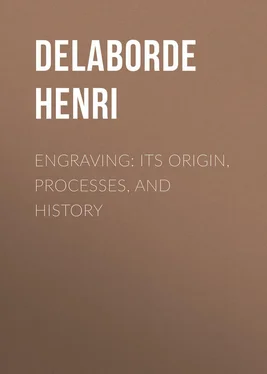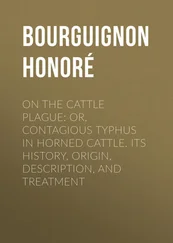Henri Delaborde - Engraving - Its Origin, Processes, and History
Здесь есть возможность читать онлайн «Henri Delaborde - Engraving - Its Origin, Processes, and History» — ознакомительный отрывок электронной книги совершенно бесплатно, а после прочтения отрывка купить полную версию. В некоторых случаях можно слушать аудио, скачать через торрент в формате fb2 и присутствует краткое содержание. Жанр: foreign_antique, foreign_prose, на английском языке. Описание произведения, (предисловие) а так же отзывы посетителей доступны на портале библиотеки ЛибКат.
- Название:Engraving: Its Origin, Processes, and History
- Автор:
- Жанр:
- Год:неизвестен
- ISBN:нет данных
- Рейтинг книги:5 / 5. Голосов: 1
-
Избранное:Добавить в избранное
- Отзывы:
-
Ваша оценка:
- 100
- 1
- 2
- 3
- 4
- 5
Engraving: Its Origin, Processes, and History: краткое содержание, описание и аннотация
Предлагаем к чтению аннотацию, описание, краткое содержание или предисловие (зависит от того, что написал сам автор книги «Engraving: Its Origin, Processes, and History»). Если вы не нашли необходимую информацию о книге — напишите в комментариях, мы постараемся отыскать её.
Engraving: Its Origin, Processes, and History — читать онлайн ознакомительный отрывок
Ниже представлен текст книги, разбитый по страницам. Система сохранения места последней прочитанной страницы, позволяет с удобством читать онлайн бесплатно книгу «Engraving: Its Origin, Processes, and History», без необходимости каждый раз заново искать на чём Вы остановились. Поставьте закладку, и сможете в любой момент перейти на страницу, на которой закончили чтение.
Интервал:
Закладка:
Doubt seems impossible on the last point. These four editions are all printed with the same cuts, on the same paper made in Brabant, and under the same typographical conditions, with the exception of some slight differences in the characters of the two Dutch editions, and the insertion of twenty leaves xylographically printed in one of the two Latin editions. Is it, then, likely, or even possible, that these books belong, as has been supposed, to Germany?
The thing might, indeed, be possible, were it merely a question of the copies in Latin; but the Dutch ones cannot be supposed to have been published anywhere but in Holland; and the origin of the latter once established, how are we to explain the typographical imperfection of the work if not by ignorance of the process which Gutenberg was to popularise? According to M. Paeile, a competent judge in such a matter 7 7 "Essai historique et critique sur l'Invention de l'Imprimerie." Lille, 1859.
the letterpress of the Dutch "Speculum" is written in the pure dialect of North Holland, as it was spoken in those parts towards the end of the fourteenth century and the beginning of the fifteenth. Armed, therefore, with but a few particulars as to printing and idiom, it will not be too bold in us to fix the date of publication between the first and second quarters of the fifteenth century. It may be added that the costume of the figures is of the time of Philip the Good; that the taste and style of the drawing suggests the influence of the brothers Van Eyck; and that there is a decided contrast between the typographical imperfection of the text and the excellent quality of the plates. Art, and art already well on its way and confident of its powers, is thus seen side by side with an industrial process still in its infancy: a remarkable proof of the advances already accomplished in wood engraving before printing had got beyond the rudimentary period. For our present purpose, this is the chief point, the essential fact to verify.
The discovery of printing, therefore, is doubtless a result of the example of relief engraving, and there is no doubt either that the first attempts at printing with type originated in Holland. Whilst Coster, or the predecessor of Gutenberg, whoever he was, was somewhat feebly preparing the way for typographical industry, painting and the arts of design generally had in the Low Countries attained a degree of development which they had not before reached, except in Italy. Amongst the German contemporaries of Hubert and John van Eyck, what rival was there to compare with these two masters? – what teacher with so notable an influence, or so fertile a teaching? Whilst, on the banks of the Rhine, artists unworthy of the name and painters destitute of talent were continuing the Gothic traditions and the formulæ of their predecessors, the school of Bruges was renewing, or rather founding, a national art. By the beginning of the fifteenth century the revolution was accomplished in this school, which was already distinguished by the Van Eycks, and to which Memling was about to add fresh lustre. Germany, too, in a few years was to glory in a like success; but the movement did not set in till after the second half of the century. Till then everything remained dead, everything betrayed an extreme poverty of method and doctrine. If we judge the German art of the time by such work, for instance, as the "St. Christopher," engraved in 1423, a single glance is sufficient to reveal the marked superiority of the contemporary Flemings. It is, then, far from unnatural that, at a time when painters, goldsmiths, and all other artists in Flanders were so plainly superior in skill to their co-workers in Germany, the Flemish engravers should likewise have led the van of progress and taken their places as the first in the history of their art.
It may be said that the proofs are insufficient. Be it so. We shall not look for them in the "Virgin" on wood, belonging to the Brussels Library, and bearing the date 1418, as the authenticity of this date, to our thinking perfectly genuine, has been disputed; nor shall we seek for them in the anonymous examples which it seems to us but just to ascribe to the old school of the Low Countries. 8 8 This, at any rate, is what we feel tempted to do as regards the "Biblia Pauperum," a book containing xylographic illustrations, whose date has been variously estimated, and which we are disposed to believe even older than the first edition of the "Speculum." Heinecken, as usual, claims for Germany the production of this precious collection, which Ottley, with more appearance of reason, regards as the work of an artist of the Low Countries, who worked about 1420. In this way Germany would only have the right to claim the plates added in the German editions published forty years later, and which are far less perfect in point of style and arrangement than those of the original edition.
Up to now we are willing to admit that only Germany is in a position to produce a piece of evidence beyond suspicion. With its imposing date of 1423, its time-honoured rights, and official renown, the "St. Christopher," now in the library of Lord Spencer, has privileges which cannot be disputed or questioned. But it does not follow that the wood-cuts of the "Speculum," of the "Biblia Pauperum," of the "Ars Moriendi," and of similar undated publications, must be more recent. Nor, because a dated German print has survived, must it therefore be concluded that nothing was produced at that time except in Germany. It should be particularly observed that the plates of the "Speculum" seem well-nigh prodigies of pictorial skill and knowledge in comparison with the "St. Christopher;" that their author must have served a long apprenticeship in a good school; that, in short, no art begins with such a piece of work, and that, even supposing these cuts did not appear till after the German print, some time had doubtless elapsed during which the progress they involve had been prepared and pursued.
It is therefore reasonable to suppose that, from the first years of the fifteenth century, the engravers of the Low Countries began, under the influence of the Van Eycks, to be initiated into the conditions of art, and that, like their countrymen the printers, they showed the path which others were to clear and level. It must be remarked, however, that in the beginning printing and wood engraving do not always march on parallel lines – that they do not meet in like order their successive periods of trial and advance. In Germany, up till the time when Gutenberg attained the final stage, and popularised the last secrets of the printing process, painters, draughtsmen, and engravers were all helpless in a rut: from the author of the "St. Christopher" to the engravers of thirty years later, they boast but the roughest and coarsest of ideas and methods. Heinecken, the exaggerated champion of the German cause as against the partisans of Coster, whom he contemptuously calls "the beadle" 9 9 The Dutch word coster means churchwarden, or beadle.
– Heinecken himself, speaking of the first German books engraved on wooden tablets, is obliged to admit that "when the drawing is examined with a connoisseur's eye, a heavy and barbarous taste appears to reign throughout." 10 10 "Ideé générale d'une Collection d'Estampes, 1771," p. 305.
In Germany the artistic part was to wait upon and follow the example of the industrial: was to lag behind and to plod on in barbarism long after the industrial revolution was accomplished at its side. And it was long before the "wood-cutting" engravers acquired anything like the skill of the printers employed by Gutenberg and by Füst.
In the Low Countries, on the other hand, the regeneration of art preceded mechanical improvement. Even when the latter was in full progress, nay, even when a grand discovery had revealed all the capabilities and fixed the limits of printing, engraving was by no means subordinated, as in Germany, to the advance of the new process, but, on the contrary, had long since acquired a clearness and certainty of execution which was still lacking in the works of the printers. The "Speculum," as we have said, bears testimony to that sort of anomaly between the mechanical imperfection of the Dutch printed texts of the fifteenth century and the merit of the plates by which they were accompanied. Other examples might be mentioned, but it is useless to multiply evidence, and to insist on details. We shall have accomplished enough if we have succeeded in accentuating some of the principal features, and in summing up the essential characteristics of engraving, at the time of the Incunabuli.
Читать дальшеИнтервал:
Закладка:
Похожие книги на «Engraving: Its Origin, Processes, and History»
Представляем Вашему вниманию похожие книги на «Engraving: Its Origin, Processes, and History» списком для выбора. Мы отобрали схожую по названию и смыслу литературу в надежде предоставить читателям больше вариантов отыскать новые, интересные, ещё непрочитанные произведения.
Обсуждение, отзывы о книге «Engraving: Its Origin, Processes, and History» и просто собственные мнения читателей. Оставьте ваши комментарии, напишите, что Вы думаете о произведении, его смысле или главных героях. Укажите что конкретно понравилось, а что нет, и почему Вы так считаете.












